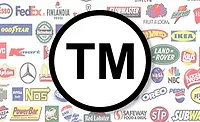Why Roofing Companies Get in Trouble
“Cash ain’t cash unless it’s cash.” Nothing can be more distracting or damaging than a cash-flow problem.
Let’s pretend for a moment that our business is our body. And each department is a piece of our body. The head is the sales department, the legs and arms are field operations, and all your internal organs are the back-office accounting duties. Each part of the body is a department and has its own area of responsibility. And cash is the blood.
Try to imagine this: All the parts/departments are working great. The head is bringing in the sales. The legs and arms are pushing out the work. The internal organs are processing the job cost reports and financial statements better than ever. The body/business seems to be humming along except for one thing: the blood/cash stops flowing. What happens? The body shuts down. If something doesn’t happen quickly, it could die. That’s what happens to a business the minute the cash slows down.
Cash-flow problems can be the most distracting, disabling thing that can happen to a business. Poor cash flow hurts your company’s reputation. Your good people will leave you. Your vendors won’t give you the best pricing. Nothing good comes from being under capitalized or out of cash.
What kind of problems cause poor cash flow?
- Not making a profit
- Too much concentration of work with slow paying clients
- Too much retainage
- Poor billing procedures
- Weak collection efforts
- Trying to do too much work
These are just a few of the many distractions that could cause you to bleed to death from a cash-flow perspective.
What are a few ways to tackle cash flow issues?
Start measuring your cash flow. Keep score. “What gets measured gets done.” It’s no different with cash flow. The best score keeping method I’ve encountered is to track your DSOs (days sales outstanding). Take your average daily sales for the past three months divided by the number of days during that period to determine your average day’s sales. Then you divide that into your total accounts receivable including retainage. This will give you a gauge to govern if you are making progress.Example: Sales for the past three months have totaled $1,500,000/91 days in the period, which equals $16,483 average daily sales. Total accounts receivable including retainage at the end of the month is $1,000,000. $1,000,000 / $16,483 = 60.67 days.
Chart that number on a graph. Help everyone understand the importance of the collection effort and how he or she can influence it. Compare it to industry averages and see how you compare.
Attempt to match your inflow of cash with your outflow. Try to negotiate terms with your primary vendors that closely resemble the time frame of your collection from clients. Attempting to pay your primary vendors before you get funding requires significant working capital.
Offer discounts to your clients for prompt pay. Make sure your margins can support it and that the cost of the discount isn’t too much more than your cost of capital.
Cut unnecessary expenses. We all put a few pounds on each year. If we haven’t weighed in lately, it might be time for us to go on a diet. Trim that excess overhead.
Sell off unused equipment or capacity. It will never be worth more than it is today. Dispose of it if you’re not going to use it.
Reduce your inventory. If you have leftover materials in the warehouse from another project, use it ASAP. Discount it in the calculation of a future job. You’ve already spent the money, use it to get another project. Contractors historically don’t manage inventory very well.
Restructure your debt. If you’re struggling to make ends meet, consider restructuring your debt from current to long term. Try to buy some time to get your profits back in line and the cash flowing better. This will stretch out that current obligation and relieve your immediate challenge.
Hire a collection expert to assist you in setting up processes and procedures to insure that the billings are getting out on time, the Notices to Owners are being filed properly, your lien rights are protected and the calls are being made. Problem accounts receivable rarely get better over time. Your first loss is always your least loss. Get your problems resolved quickly. They will only get worse the longer they sit.
These are just a few strategies you can implement quickly and easily that will make immediate impact. Remember, cash ain’t cash unless it’s cash.
Looking for a reprint of this article?
From high-res PDFs to custom plaques, order your copy today!





